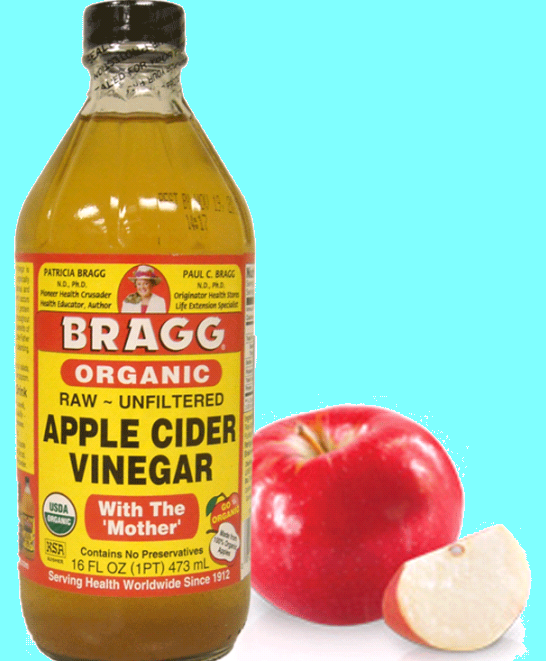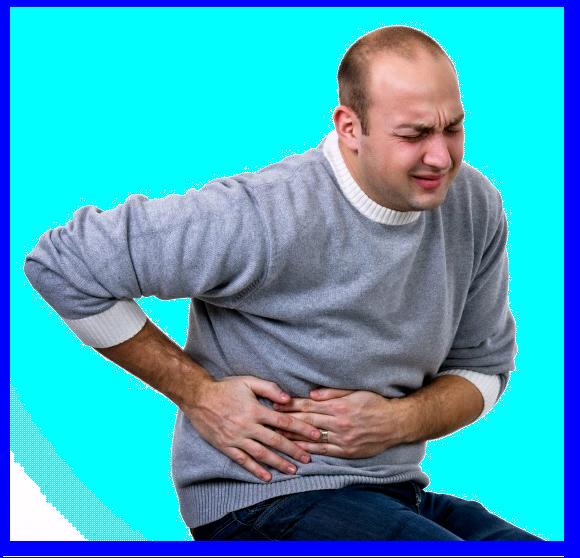 Everybody’s looking for ways to get healthy. And most of us wouldn’t mind finding little shortcuts to that good health. In fact, daily health tips are among the most trending Internet subjects ever, and the reason is pretty obvious. People are too busy these days to spend hours every day at the gym or reading about staying healthy. They’d rather do it! And that’s why apple cider vinegar has gained so much popularity in the United States and throughout the world. But it’s not just a fleeting fad, like many other daily health tips you read about. The health benefits of apple cider vinegar have been known for centuries. It’s been used for a number of ailments for thousands of years. Thankfully, its use throughout history as a health booster has been recorded and is still known today. In fact, today apple cider vinegar’s effectiveness for aiding in the cure of many medical conditions is even more prevalent than ever. It’s also been known throughout history that apple cider vinegar has many cosmetic uses. Following is helpful information about some of the most beneficial uses for apple cider vinegar.
Everybody’s looking for ways to get healthy. And most of us wouldn’t mind finding little shortcuts to that good health. In fact, daily health tips are among the most trending Internet subjects ever, and the reason is pretty obvious. People are too busy these days to spend hours every day at the gym or reading about staying healthy. They’d rather do it! And that’s why apple cider vinegar has gained so much popularity in the United States and throughout the world. But it’s not just a fleeting fad, like many other daily health tips you read about. The health benefits of apple cider vinegar have been known for centuries. It’s been used for a number of ailments for thousands of years. Thankfully, its use throughout history as a health booster has been recorded and is still known today. In fact, today apple cider vinegar’s effectiveness for aiding in the cure of many medical conditions is even more prevalent than ever. It’s also been known throughout history that apple cider vinegar has many cosmetic uses. Following is helpful information about some of the most beneficial uses for apple cider vinegar.

A famous writer once wrote, “Strength is the capacity to break a chocolate bar into four pieces with your bare hands… and eat just one piece.” Pretty funny, huh? Want to know the funniest thing about that quote? You don’t have to eat just one piece anymore… now that medical science has proven eating chocolate is actually good for you. It’s true! Chocolate has a number of health benefits, some that you’ve probably already heard about, and others that might not be so obvious. You probably already know that chocolate can help to elevate your mood, but there are a number of other health benefits of chocolate you likely don’t know about chocolate. For instance, did you know eating chocolate may actually help you eat less? Bet that’s one you’ve never heard before… but it’s a fact! And what about eating chocolate to help you develop and maintain glowing skin? Or even breaking off a couple pieces of that chocolate bar for… are you ready for this?… A sunburn! It’s true. Chocolate can even help to reduce the effects of a sunburn. When it comes to good health there are a number of daily health tips that you should live by and eating dark chocolate is a good daily health tip.

“On the eighth day, God created coffee… so that people like me could experience those seven other days.” Is this you? Are you somebody who just can’t start your day without your morning cup of coffee? If you are, then it probably won’t surprise you a bit to hear you’re not alone, especially in the United States. According to the website of the Statistic Brain Research Institute, more than half of all American adults are coffee drinkers; upwards of 100 million people in the United States love coffee; and more than 65 percent of those have their first cup in the morning. And why not? Coffee is the perfect way to kick off your day! It gets your juices flowing and your brain synapses sparking. But what else can coffee do? What would you say if someone told you that cup you enjoy every morning has the power to make you healthier? It’s true! Recent studies have shown that drinking coffee is one of those daily health tips everyone should know more about. Why? Because coffee has a number of health benefits, such as helping you burn fat, improving your physical performance, and even lowering your risk of such health conditions as depression and type 2 diabetes. Still not shocked? Then, what would you say if someone told you coffee can lower your risk of developing Alzheimer disease and even some types of cancer? Thought so!

This guest post was written by Efraim Landa
Efraim Landa is the founder of Effi Enterprises a Venture capital firm that funds medical start ups.
Diabetes is on the rise in the United States. According to the 2014 National Diabetes Statistics Report, nearly 10 percent of the American population has diabetes, and more than 8 million are yet undiagnosed. Diabetes is a medical condition that is characterized by elevated blood sugar levels. The levels of blood sugar in the blood are controlled by the substance insulin. Insulin is a necessary pancreatic hormone, but in diabetics, it is produced less often, or the body simply does not respond the way it should to that insulin. There are two types of diabetes: type 1 and type 2. Type 1 diabetes is formerly known as juvenile diabetes or insulin-dependent diabetes. Type 2 diabetes is formerly known as adult-onset or non-insulin-dependent diabetes. There are a number of differences between these two types of diabetes. The first type of diabetes, type 1, typically occurs in childhood (but not always), and its causes are still unknown. Type 1 only accounts for between 5 and 10 percent of all diabetics. Type 2 diabetes typically occurs in adulthood (but can occur at nearly any age), and it is largely preventable. This article contains information on how to prevent the risk of type 2 diabetes.

The word ‘celiac’ (Greek) literally means ‘relating to the abdomen.’ Celiac disease is a digestive disorder that occurs when wheat, pasta, breads, and other products that contain gluten irritate the small intestine. The word ‘gluten’ is derived from the Latin word ‘glue.’ It is a combination of plant proteins occurring in grains such as wheat, corn, barley, and rye. The word gluten is used in this way because it actually is an adhesive. Gluten is found in many processed foods in our American diet today. Surprisingly to many, it is also used in many medications, vitamins, and even lip balms. Those who suffer from celiac disease cannot consume gluten because it prevents nutrients from being absorbed into the body, thereby causing damage to the lining of the intestines. If celiac disease goes undiagnosed or untreated, it can lead to serious complications with other areas of the body, such as the nervous system, bones, and even the brain. Thankfully, though celiac disease is more common today than ever, it’s also true that many American food manufacturers are coming up with more foods that are friendly to those who suffer with celiac disease. Following is information from a gastroenterologist about the celiac disease friendly diet.
 A stomach ulcer occurs when areas of the lining of the stomach or small intestine become eroded or worn away. Stomach ulcers can be very painful. They can also cause additional symptoms, including nausea, vomiting, bloating, and loss of appetite. Stomach ulcers can even lead to more serious medical conditions, including cancers of the stomach and digestive system. There are a number of known contributors to the development of stomach ulcers. These include poor diet, bacteria known as H. pylori (helicobacter pylori), use or overuse of non-steroidal anti-inflammatory drugs (NSAIDs), consuming products with caffeine or carbonation, smoking, and excessive alcohol use. But there is good news about stomach ulcers. They are largely preventable. In many instances, all it takes is a little behavior modification here and there to reduce your risk of developing a stomach ulcer. Here are some tips from gastroenterologists on how to prevent stomach ulcers.
A stomach ulcer occurs when areas of the lining of the stomach or small intestine become eroded or worn away. Stomach ulcers can be very painful. They can also cause additional symptoms, including nausea, vomiting, bloating, and loss of appetite. Stomach ulcers can even lead to more serious medical conditions, including cancers of the stomach and digestive system. There are a number of known contributors to the development of stomach ulcers. These include poor diet, bacteria known as H. pylori (helicobacter pylori), use or overuse of non-steroidal anti-inflammatory drugs (NSAIDs), consuming products with caffeine or carbonation, smoking, and excessive alcohol use. But there is good news about stomach ulcers. They are largely preventable. In many instances, all it takes is a little behavior modification here and there to reduce your risk of developing a stomach ulcer. Here are some tips from gastroenterologists on how to prevent stomach ulcers.
 Millions of Americans suffer from stomach ulcers. In fact, so many people in the U.S. have stomach ulcers that we’ve almost become desensitized to the seriousness of this medical condition. Stomach ulcers, sometimes also referred to as peptic ulcers, are worn or eroded areas of the lining of the stomach, esophagus, or small intestine. The term ‘stomach ulcer’ can be a catch-all phrase used by laypeople for a number of ulcerative conditions within the digestive system, but physicians do have more specific terms for them. When stomach ulcers are diagnosed, they are called gastric ulcers. When ulcers of the duodenum are diagnosed, they are referred to as duodenal ulcers. And when ulcers of the esophagus are diagnosed, they are referred to as esophageal ulcers. In layman’s terms, however, these oftentimes fall into the category of stomach ulcers. There are a number of causes or contributing factors to stomach ulcers, including age, smoking, bacteria, use of some medications, excessive alcohol use, and diet. Following is more detailed information from GI doctors regarding the causes of stomach ulcers, as well as measures that can be taken to prevent them. If you think you have a stomach ulcer or are at risk of an ulcer you should contact a gastroenterologist in Queens.
Millions of Americans suffer from stomach ulcers. In fact, so many people in the U.S. have stomach ulcers that we’ve almost become desensitized to the seriousness of this medical condition. Stomach ulcers, sometimes also referred to as peptic ulcers, are worn or eroded areas of the lining of the stomach, esophagus, or small intestine. The term ‘stomach ulcer’ can be a catch-all phrase used by laypeople for a number of ulcerative conditions within the digestive system, but physicians do have more specific terms for them. When stomach ulcers are diagnosed, they are called gastric ulcers. When ulcers of the duodenum are diagnosed, they are referred to as duodenal ulcers. And when ulcers of the esophagus are diagnosed, they are referred to as esophageal ulcers. In layman’s terms, however, these oftentimes fall into the category of stomach ulcers. There are a number of causes or contributing factors to stomach ulcers, including age, smoking, bacteria, use of some medications, excessive alcohol use, and diet. Following is more detailed information from GI doctors regarding the causes of stomach ulcers, as well as measures that can be taken to prevent them. If you think you have a stomach ulcer or are at risk of an ulcer you should contact a gastroenterologist in Queens.
 Most people have had heartburn every now and again. It’s that painful, burning feeling you get in your chest that usually occurs after you’ve eaten something you likely know you shouldn’t have. It can also happen when you’ve overindulged in a food that wouldn’t normally give you heartburn … if only you’d eaten it in moderation. Occasional heartburn isn’t considered a medical problem. It’s when you start experiencing that painful, burning sensation on a regular or recurring basis that it can turn into a health concern. That’s when it turns from an infrequent occurrence to a medical condition known as gastroesophageal reflux disease (GERD), more commonly referred to as ‘acid reflux.’ Acid reflux not only can cause discomfort and pain that can eventually become severe. It can also take a chunk out of your active lifestyle that you’re not willing to give. Top gastroenterologists recommend taking some of the following steps toward reducing acid reflux in order to reduce the pain and additional symptoms that can accompany this medical condition.
Most people have had heartburn every now and again. It’s that painful, burning feeling you get in your chest that usually occurs after you’ve eaten something you likely know you shouldn’t have. It can also happen when you’ve overindulged in a food that wouldn’t normally give you heartburn … if only you’d eaten it in moderation. Occasional heartburn isn’t considered a medical problem. It’s when you start experiencing that painful, burning sensation on a regular or recurring basis that it can turn into a health concern. That’s when it turns from an infrequent occurrence to a medical condition known as gastroesophageal reflux disease (GERD), more commonly referred to as ‘acid reflux.’ Acid reflux not only can cause discomfort and pain that can eventually become severe. It can also take a chunk out of your active lifestyle that you’re not willing to give. Top gastroenterologists recommend taking some of the following steps toward reducing acid reflux in order to reduce the pain and additional symptoms that can accompany this medical condition.
Millions of Americans are reaching beyond modern medicine these days for natural treatments for a number of health conditions, and varicose veins is one of them. Though varicose veins may not be the type of health problem most people would consider could be treated with natural therapies, the fact is that many medical doctors use a number of natural treatments for their patients who are newly diagnosed with varicose veins. Varicose veins are reddish-purple, twisted veins that bulge up from under the skin. They’re unattractive, no doubt. But more importantly, varicose veins can cause discomfort and various degrees of pain, along with other symptoms such as burning, itchiness, and difficulty with movement, especially when they occur on the legs. If you’re someone who is experiencing any of the symptoms of varicose veins, varicose vein treatment recommend that you consult a specialist as soon as possible in order to be properly diagnosed. It’s also important that you learn your diagnosis soon in order to begin on necessary treatment. And, when it comes to treatment, a number of natural therapies are considered effective in reducing the effects of varicose veins.
Natural treatments are more popular today than ever. With so many folks wanting to avoid being on medications that may end up causing side effects, millions of people are looking to natural alternatives to their medical conditions. But, if you’re someone who has spider veins, did you ever consider natural treatments for them? So many people don’t even consider natural therapies when looking for ways to reduce or even eliminate their spider veins. However, there are a number of natural treatment options for spider veins, and many of these are even used by medical doctors as a means of not only treating but also preventing spider veins. In fact, spider vein treatment often starts with some natural therapies.

